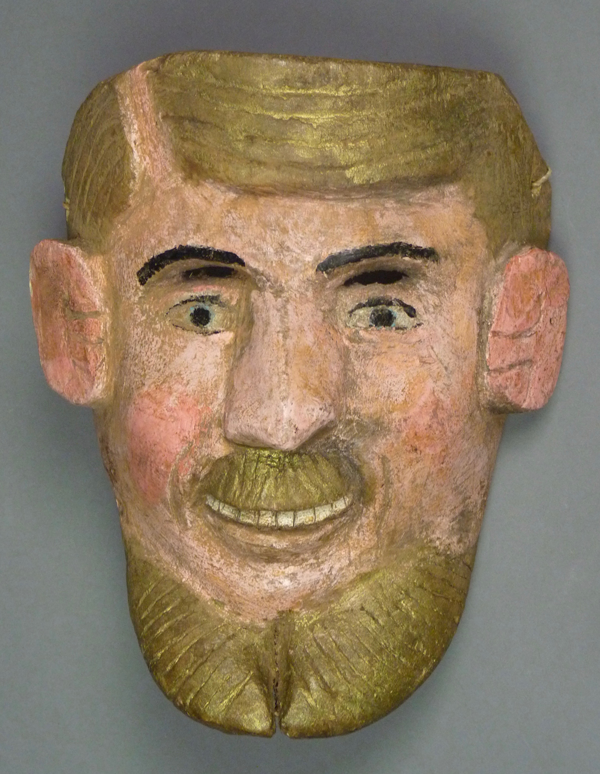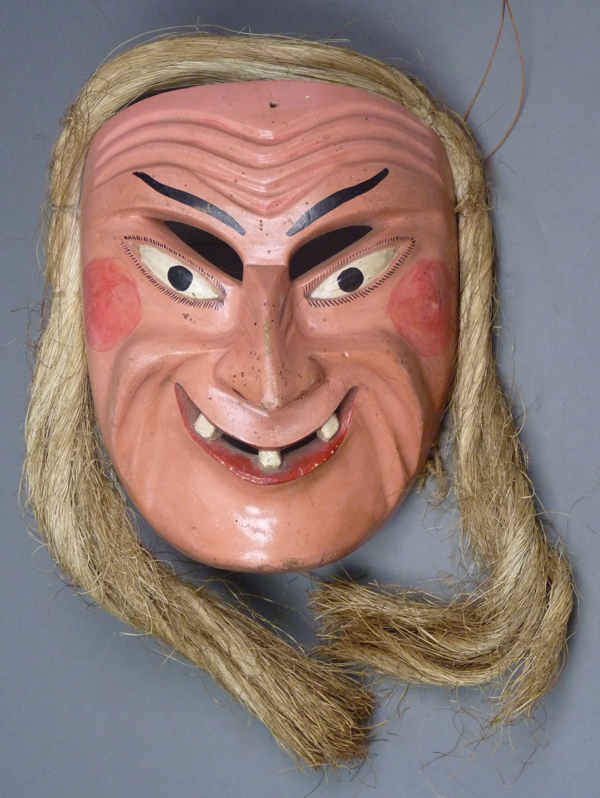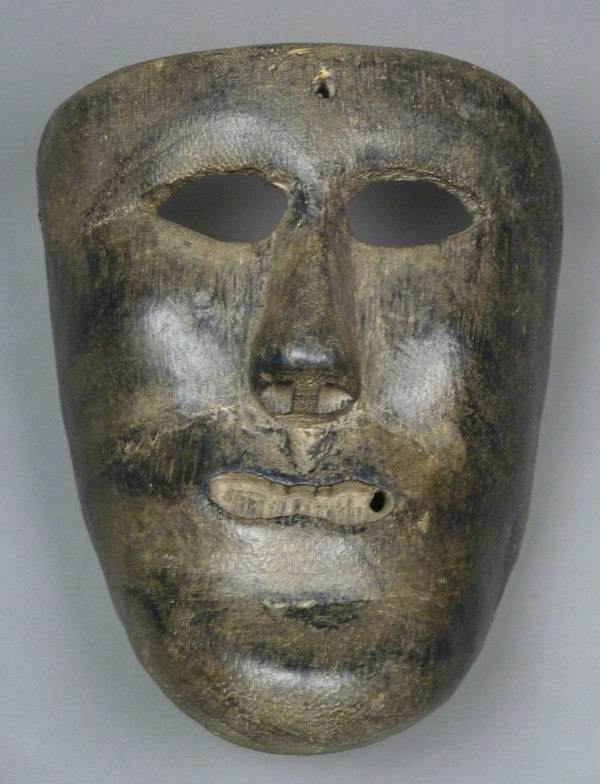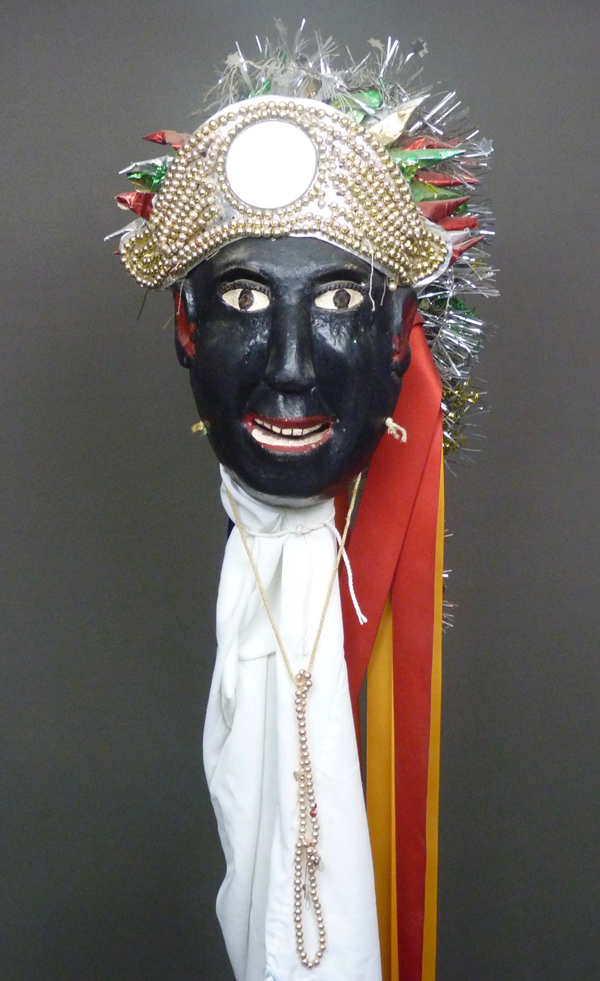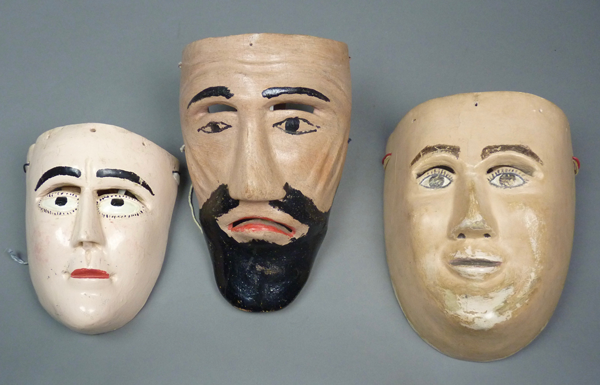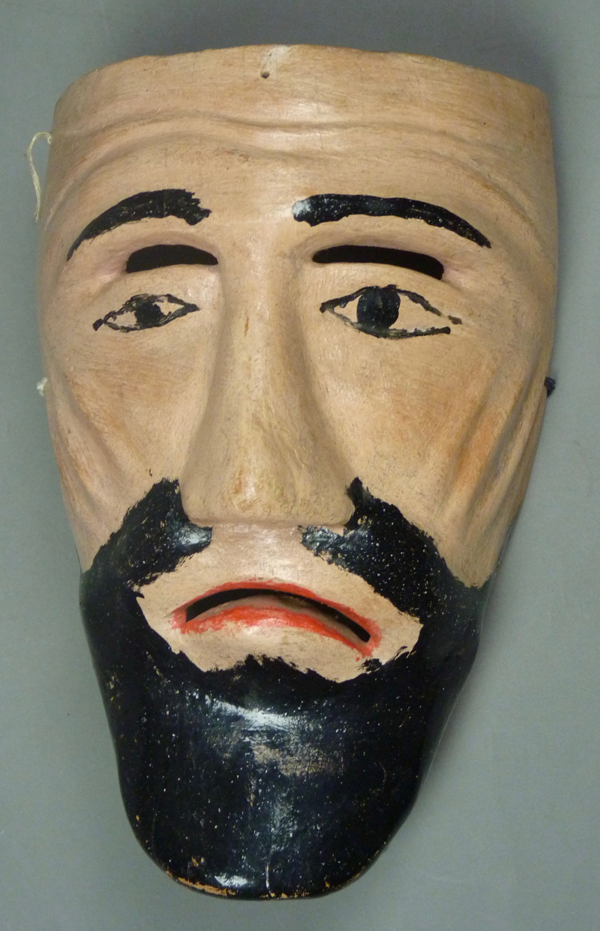Last week we looked at Viejito masks from Cherán and Uruapan, Michoacán, masks with amusing and highly stylized features. Just as we have seen with Curpite and Negritos masks, those used by Viejito dancers also demonstrate a range of designs. The differences are sufficiently pronounced to have misled dealers and collectors to label some Viejito masks as being from entirely different dances. Part of the problem has been that modern carvers have been more ambitious, creating fancier masks. The ready availability of YouTube™ documentation, when combined with photos from the few available illustrated books, allow one to at least begin to sort out this mystery.
Today’s first mask, which I bought from René Bustamante in 1994, listed this provenance on the tag—”Uricho, Mich.-Dia del levanta y niento del Niño 2/2.” The Christian feast of Candlemas, also called “The Presentation of the Infant Jesus,” occurs each year on February 2, 20 days after Christmas day. In the past, February 2 was actually considered to be the first day of the New Year. Searching on YouTube™ and in Calendario de Fiestas Populares (1988), I did not find any references to masked dances in San Francisco Uricho. The second and third masks, also obtained from René, were said to be from Purépero de Echáiz, and for whatever reason, I thought of all three as Españoles (Spaniards). One of these is obviously by the same hand as the first, while the other is only slightly different, as if from the same tradition but another carver. The Calendario reference book did confirm that Viejitos dance in Purépuro, but there was no listing for Viejitos at Candlemas. That reference book did confirm that many towns in Michoacán celebrate Candlemas with some sort of fiesta, and a YouTube video from Sicuicho, Michoacán showed Viejitos dancing on February 2 while wearing masks similar to the third in today’s group. Therefore I conclude that these first three masks were worn by Viejito dancers in that area of Michoacán. San Francisco Uricho and Sicuicho are about 100 miles apart, while Purépero de Echáiz lies in between, about 60 miles from either one. The link that follows features Viejitos dancing on Feb 2, 2017 (Candlemas) in Sicuicho. Note that Maringuilla is represented in this town by three unmasked women, rather than by men wearing female masks.
https://www.youtube.com/watch?v=ZvpjnT1o21o&vl=en
Further review of the Purepecha Masks 2002 Catalogue reveals that smiling Caucasian faces with golden hair (but lacking relief carved ears) can represent other dance characters, such as Kings, “Black Men,” Tare Andari, Monarcos, and Hermitaños, depending on the town.
Here is the mask with the tag linking it to Candlemas in San Francisco Uricho. In general, it seems that about half of the Viejitos in Michoacán have what we might call this “realistic” style, while the other half have the highly exaggerated style that we saw in last week’s post. What they have in common is a broad grin
This type usually has golden hair, mustache, and beard, while the other style of mask lacks hair altogether and requires the attachment of a wig.

